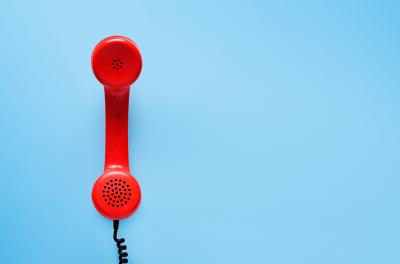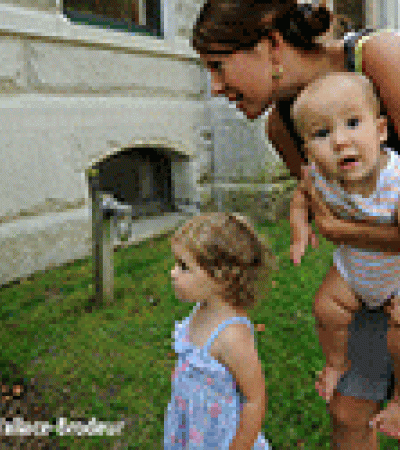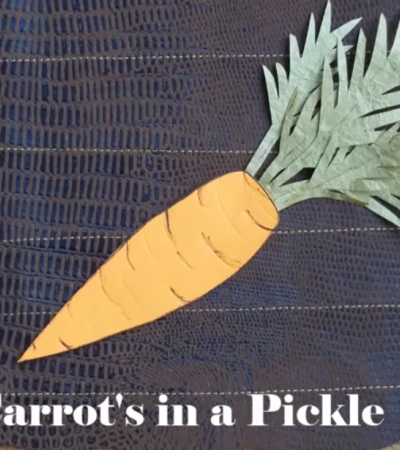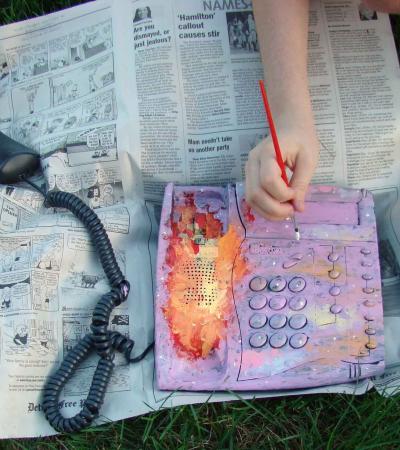With COVID-19, many of us are attached to our screens — even more than usual. Library programming has gone digital. But what about patrons without internet access, or with very limited access? To combat the digital divide, libraries and humanities councils across the country are finding the old-fashioned phone to be a strong programming tool.
I spoke with some librarians and humanities professionals on how they transform the simple act of dialing a phone into an educational and entertaining experience and how COVID-19 could bring along a resurgence of these programs. They offer up tips on how your library can start similar programming.

Call-in programs at Jefferson County Public Library, Lakewood, Colo.
Jefferson County Public Library has been implementing what they describe as “call-in programs” for a few years. Differing from the classic dial-in format, call-in programs allow live interaction for up to 100 patrons on a single call.
Call-in programs were initially created to serve older patrons and those who couldn’t come into the physical library space. “We were doing them once or twice a month,” says Cindy Jaye, manager of programming. “Now we practically do them once a day!”
As soon as staff found out that the library would close because of COVID-19, they immediately went to see which existing in-person programs could be reconceived as call-ins; to their surprise, they discovered that most of them could be. “The best thing about it,” Cindy says, “is that patrons don’t even need internet, just a phone connection. It’s also great because this means that a simple phone call can be used for more than just story times.”
Technology used: UberConference. One line can hold up to 100 participants.
Marketing: Jefferson County Public Library’s community partnership team works with public schools and other departments to get the word out.
Target audience: Children, teens, adults, seniors.
Feedback: Feedback from the community has been positive. “We regularly get thank you notes, especially from parents and older patrons,” Cindy says.
Most popular call-in programs: One program that Jefferson County Public Library has been able to successfully transfer to call-in format is their Hard Times Writing Workshop. Offered with community partner Lighthouse Writer’s Workshop, the workshop typically meets in person and was initially designed for people experiencing homelessness to write and reflect in a group setting. “Many of these people do not have internet access, so a call-in is really the best and only alternative for them,” Cindy says. “This program is very popular in person, and so far, the call-in version has been very well-attended.”
Another successful call-in program is Thursday Mid-Morning Meditation. The library has gotten up to 70 patrons in a group meditation call. Teen Dungeons & Dragons call-ins, Call-In Mindfulness and Call-In Stress Management programs also have been popular during the library’s closure.
Advice: Don’t be intimidated by the technology, because it’s fairly simple to set up. “I would recommend having two staff members on each call-in program,” Cindy says. “Have a host and a presenter if you can. The host is responsible for the tech and to welcome participants to the call. This takes any extra stress off of the presenter, especially if there happens to be a techy glitch.” Cindy’s final piece of advice would be to remind program presenters that having a call-in option is important: “Remind them that even though Zoom calls and live streams are great, call-ins are just as beneficial and can be accessible to patrons without internet."
Dial-A-Story at Washington County (Va.) Public Library
Since September 2018, Washington County Public Library has offered stories over the phone and on their website. They use a volunteer reader, retired Barter Theatre actor Rick McVey, who records the stories digitally. This was originally a weekly task but since the COVID-19 pandemic, the library has switched to daily uploads.
The library isn’t able to track the number of calls that come into their Dial-A-Story line but since the library closed, they’ve seen the website activity on their Dial-A-Story page go up. “We went from 49 views in March 2019, all the way up to 253 views in March 2020,” says Amanda Bailey, community engagement and information technology librarian. She hopes that it gives children without the internet a chance to hear new stories.
Number: 276-676-6234
Technology used: The reader uses a digital recorder that saves the audio file in MP3 and WAV formats. The library uses the WAV for the voicemail and the MP3 for the website. The phone system is by GrandStream.
Most popular Dial-A-Story: Classics are always a hit. “Goodnight Moon” and “The Runaway Bunny” are favorites.
Marketing: The library markets their Dial-A-Story with bookmarks in the library and at community events. “The county school’s pre-K teachers share it with their parents as a reading resource,” says Amanda. It’s also included on a monthly event calendar and featured in the Friends of the Library's newsletter. Dial-A-Story was also featured in the local newspaper.
Target Audience/Demographics: Children.
Feedback: Parents share that Dial-a-Story is the perfect length for the school’s car drop-off in the morning. Amanda tells me that the reader, Rick McVey, “was stopped by a parent in the Sam’s Club parking lot! He said his child just loved it and how much they enjoyed listening to the stories together.”
Copyright: “Each recording we upload to our website has an 'all rights reserved' disclaimer," Amanda says, “which was recommended by our county attorney before we moved forward with the project.”
Advice: Amanda’s advice is simple: don’t be afraid start a Dial-A-Story line! You don’t need fancy digital recording and phone systems. “It works just as well on a regular phone with voicemail," Amanda says. “You just need a dedicated phone number." Their main snag is the four-minute limit, but if you have a larger mailbox you can share longer stories. Finally, she advises you to run it by your organization’s legal advisor just to be on the safe side with any copyrights before you begin.
Dial-A-TALK and Dial-A-Speaker at Humanities Kansas
Humanities Kansas started their Dial-a-TALK and Dial-a-Speaker programs in response to the growing concerns around COVID-19. The Dial-In programs are condensed versions of their popular Speakers Bureau program and TALK book discussions led by scholars and trained discussion leaders.
Those interested in participating can choose from a variety of topics and can pick a time for their call. Topics include Kansas Legends and Folktales and When Freedom Changed America. Since this is a brand new program, discussion leaders submit a short evaluation of what was discussed, how they thought the experience went and to best describe their audience. “We were looking for creative ways to combat isolation and spark conversations,” says Program Officer Abigail Kaup. “What better way than through a friendly voice on the other end of the line?”
“In the face of unprecedented uncertainty and change, we turn to the humanities. For us, that means growing and expanding our humanities-based resources in new and exciting ways that keep us grounded and feeling connected, even when we cannot be together,” Abigail says. It is important that those without access to broadband or reliable internet connection are still able to participate in their programming, she says.
Technology used: Presentations can be conducted by phone, Skype, FaceTime or Zoom.
Marketing: Humanities Kansas promotes these programs through social media platforms, their bimonthly newsletter, email lists and word of mouth.
Target Audience/Demographics: So far, Humanities Kansas has seen a wide range of participants.
Feedback: Feedback has been encouragingly positive so far. “Dial-a-Speaker/TALK is great because we can connect individuals directly with experts,” Abigail says. “What results is an engaging, intimate conversation and exchange of ideas.”
Advice: This is the first time Humanities Kansas has offered presentations and book discussions as a virtual service. To help with the learning curve, Abigail and the team at Humanities Kansas created detailed instructions for How Set-up a Dial-A-Speaker/TALK. “We wanted these programs to be easy for anyone to use,” Abigail says, “We hope these guides will give people the confidence to take that next step.” If people are interested in learning more or discussing the Dial-A-Speaker/TALK programs in greater detail, Abigail encourges a visit to humanitieskansas.org or to contact her at abigail@humanitieskansas.org.
Dial-A-Story at San Antonio (Texas) Public Library
Dial-A-Story/Telecuentos is a dedicated phone line with recordings of stories in English and Spanish that has existed since the early '90s at San Antonio Public Library. “Originally, Dial-A-Story was a partnership with the local newspaper, the San Antonio Express-News,” says Cresencia Huff, coordinator of children’s services. “Recordings would alternate between a SAPL staff person and a representative from the newspaper.”
The stories are usually updated weekly, but with the recent library and school closures, the frequency has increased to twice per week. The library has seen a surge in interest since quarantine began; April's call volume was 53 percent higher than the previous 11 months. “We received a request from our Early Head Start and Head Start team asking for titles of the stories we would be sharing so they could prepare some extension activity ideas for their families,” Cresencia shares. With this enhancement to the service, San Antonio Public Library anticipates an ongoing increase in the number of calls.
Number: 210-207-4466
Technology used: The library uses a dedicated CISCO Unity call handler.
Marketing: The service is shared in outreach programs and through community early childhood partners.
Target Audience/Demographics: Primarily children.
Feedback: Patrons love that they don’t need to download anything or use a screen. “When we tell groups about the service, parents and caregivers often immediately add the number to their speed dial,” Cresencia says.
The program has even attracted superfans. “Years ago, the library had a dedicated fan of the line who frequently called to let us know when a story had not been changed by a set time.” These days, they primarily receive compliment calls from grateful patrons.
Advice: Remember to have ongoing monitoring of who is recording, what is recorded and recording quality. You don't want to record the same story twice in a the span of a week and you want to make sure the final recordings have a good sound quality. “SAPL has two children’s librarians who assist with the monitoring work,” Cresencia says.
She also advises to keep the recordings short, no longer than four minutes, to accommodate children’s attention spans. “Make sure you have a mix of children’s librarians and staff in other roles to do the recordings,” she says, “and define your target audience so you can choose stories appropriate for that group.”



